

John Parker (1710, London - 1765, London) was an English history and portrait painter, who spent much of his career in Italy.


John Parker (1710, London - 1765, London) was an English history and portrait painter, who spent much of his career in Italy.
He went to Rome on a study visit in 1745, and remained there for several years; becoming a student of Marco Benefial in 1748. The following year, he painted an altarpiece for the Basilica of San Gregorio Magno al Celio, on the Caelian Hill. [1] In 1751, he witnessed an eruption of Vesuvius.
From 1752, he was also Director of an art school founded under the leadership of James Caulfeild, 1st Earl of Charlemont, a patron of the arts from Ireland. Known as the Academy of English Professors of the Liberal Arts, it was in operation for only six years, when major disagreements among its members forced the Earl to order it closed. [2] During its brief existence, it also provided copies of the Italian Old Masters for the English art market, and Parker worked as an agent.
Later, he went to the Accademia delle Arti del Disegno in Florence then to the Accademia di San Luca. [3] His best known student was the German artist, Franz Ignaz Oefele, who became a court painter in Munich.
In 1762, he returned to England and, the following year, participated in an exhibition at the Free Society of Artists, where he presented a self-portrait and an historical scene, depicting the assassination of David Rizzio. [4] He also exhibited at the Royal Academy of Arts.

Maria Anna Angelika Kauffmann, usually known in English as Angelica Kauffman, was a Swiss Neoclassical painter who had a successful career in London and Rome. Remembered primarily as a history painter, Kauffman was a skilled portraitist, landscape and decoration painter. She was, along with Mary Moser, one of two female painters among the founding members of the Royal Academy in London in 1768.

Pompeo Girolamo Batoni was an Italian painter who displayed a solid technical knowledge in his portrait work and in his numerous allegorical and mythological pictures. The high number of foreign visitors travelling throughout Italy and reaching Rome during their "Grand Tour" led the artist to specialize in portraits.

The Accademia di San Luca is an Italian academy of artists in Rome. The establishment of the Accademia de i Pittori e Scultori di Roma was approved by papal brief in 1577, and in 1593 Federico Zuccari became its first principe or director; the statutes were ratified in 1607. Other founders included Girolamo Muziano and Pietro Olivieri. The Academy was named for Luke the Evangelist, the patron saint of painters.
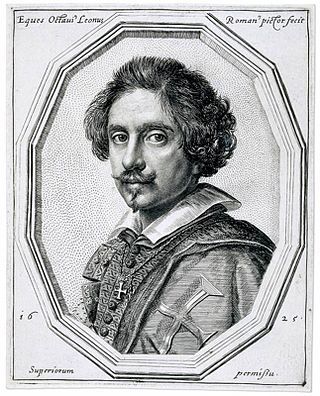
Ottavio Leoni was an Italian painter and printmaker of the early-Baroque, active mainly in Rome.

Bernardino Poccetti, also known as Barbatelli, was an Italian Mannerist painter and printmaker of etchings.

Pier Leone Ghezzi was an Italian Rococo painter and caricaturist active in Rome.

Antonio Balestra was an Italian painter of the Rococo period.
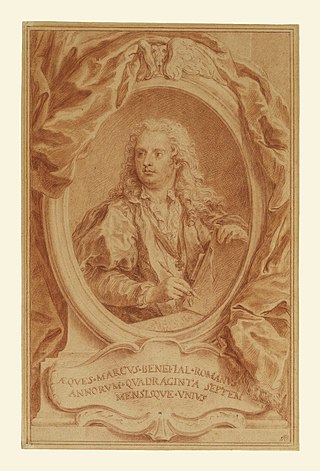
Marco Benefial was an Italian, proto-Neoclassical painter, mainly active in Rome. Benefial is best known for his repudiation of 18th century decorative Rococo styles pre-eminent in the Rome dominated by Carlo Maratta pupils. His paintings portrayed tangible human figures, with complex treatment of space, and luminous, warm colors. Along with the altarpieces and frescoes, he also painted many portraits. Because he partnered with some inferior artists who subsequently received credit, some of his paintings have been frequently misidentified.

Gregorio Lazzarini was an Italian painter of mythological, religious and historical subjects, as well as portraits. One of the most successful Venetian artists of the day, a prominent teacher, and father to a significant school of painting, he is best known for having first trained Giambattista Tiepolo, who joined his workshop in 1710 at the age of fourteen. His own style was somewhat eclectic.
Francesco Fernandi (1679–1740), also known as Imperiali, was an Italian painter of the late-Baroque or Rococo period.
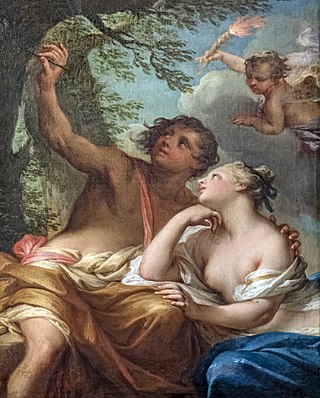
Andrea Casali was an Italian painter of the Rococo period. He was also an art dealer in England.

Luigi Calamatta, also known as Louis Antoine Joseph Calamatta was an Italian painter and engraver. He was born at Civitavecchia, in the Papal States and died in Milan.
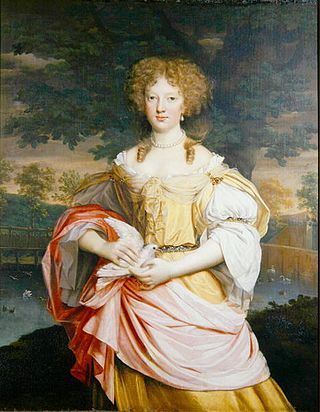
John Michael Wright was an English painter, mainly of portraits in the Baroque style. Born and raised in London, Wright trained in Edinburgh under the Scots painter George Jamesone, and sometimes described himself as Scottish in documents. He acquired a considerable reputation as an artist and scholar during a long sojourn in Rome. There he was admitted to the Accademia di San Luca and was associated with some of the leading artists of his generation. He was engaged by Archduke Leopold Wilhelm of Austria, the governor of the Spanish Netherlands, to acquire artworks in Oliver Cromwell's England in 1655.
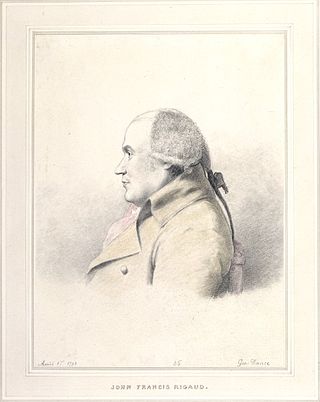
John Francis Rigaud was an eighteenth-century history, portrait, and decorative painter. Of French descent, he was born in Turin and spent most of his career in England.

Francesco Mancini was an Italian painter whose works are known between 1719 and 1756. He was the pupil of Carlo Cignani.

Nicolas-Didier Boguet was a French landscape painter. He spent his adult life in Rome.
Jacob Ennis (1728-1770) was an Irish historical and portrait painter. He studied at Dublin under Robert West, and afterwards in Italy. He subsequently became a master in the Dublin Art School.
Stephen Slaughter was an English portrait painter. He spent periods of his career in Dublin, where he introduced the English style of portrait painting.

The Academy of English Professors of the Liberal Arts was a British art school in Rome.
![]() Media related to John Parker at Wikimedia Commons
Media related to John Parker at Wikimedia Commons